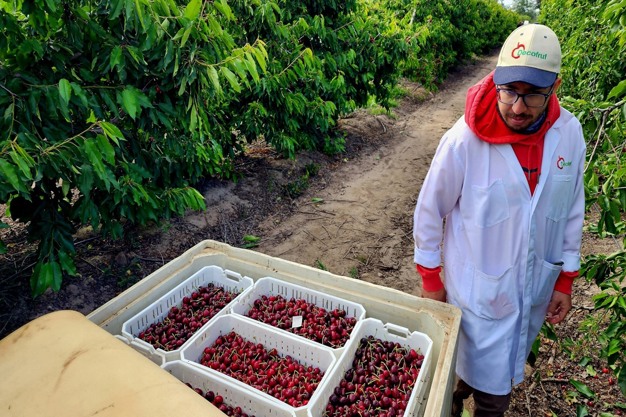"Last season, Chile exported almost 83 million boxes of cherries. This was 15% less than initially expected and was the result of the impact of the weather. However, for next season, an increase of around 40% is expected, with the prospect of reaching between 115 and 120 million boxes. This increase is mainly due to the increase in production capacity; a result, among other things, of the successful development of logistical infrastructures, which have allowed Chilean exporters to become more competitive in the delivery of fresh fruit," says Manuel José Alcaino, President of Decofrut.

One of the key factors behind this growth has been innovation in export logistics. "The Cherry Express program, a logistics solution created approximately five years ago, has reduced transit times between Chilean ports and China by 10 days, ensuring that the fruit arrives in optimum conditions. This improvement has delivered such great results that it has been extended to other fruits, such as grapes and blueberries, under the name of Asia Express," says Alcaino.
Chilean exporters also have access to a greater number of terminals and ports of entry into China, allowing for cherries to be distributed not only in large coastal cities, but also in second and third tier cities in the interior of the country, where the demand for fresh produce has grown considerably. This strategy has allowed Chile to secure a solid and growing market in the Asian giant, which is still the main destination for its cherries, absorbing 92% of all exports last year.

Although China is still the main market, Chilean cherry shipments are expected to grow both in Europe and the United States in the coming seasons. "In recent years, Chile's shipments to Europe had dropped. The country had gone from exporting 1.3 million boxes in the 2021/2022 campaign to just 800 thousand last year (2023) because of the higher concentration of exports to Asia. However, with the expected increase in the production, exporters hope to recover the lost volume and increase their presence both in North America and on the European continent, as both markets are large consumers of cherries during the Northern Hemisphere season," says Alcalino.
A favorable factor for Chilean cherry exporters is the differentiation in the production seasons between the Northern and Southern Hemispheres. "While production in the north takes place between May and August, in the Southern Hemisphere, and particularly in Chile, the cherry season runs from November to February. This ensures that there is no direct competition between northern and southern producers, allowing Chilean exporters to dominate the Northern Hemisphere market during the winter months," says Alcalino.
The growth of the Chilean cherry industry is impressive, but there are still challenges. "One of the main challenges ahead is to maintain the quality of the product and guarantee its efficient distribution in emerging and alternative markets. Also, exporters will have to deal with the effects of climate change, which has already taken a toll on the production in previous seasons, and they will need to further optimize their logistics chains to ensure that Chilean cherries remain an attractive option in international markets," says Alcaino.
For more information:
Manuel José Alcaino
Decofrut
Tel.: +56 (2) 2658-7474
[email protected]
www.decofrut.com
